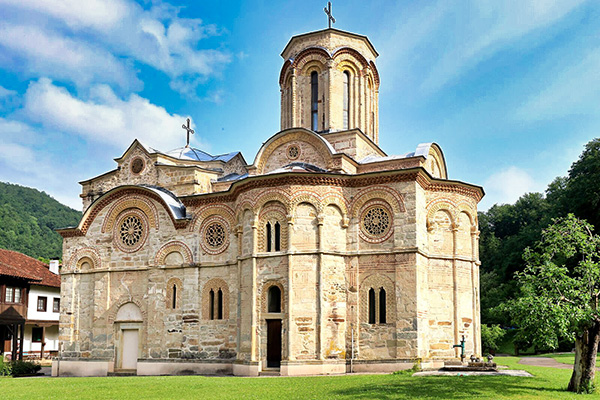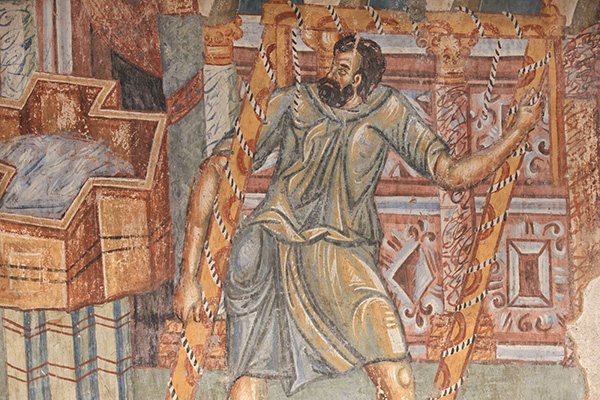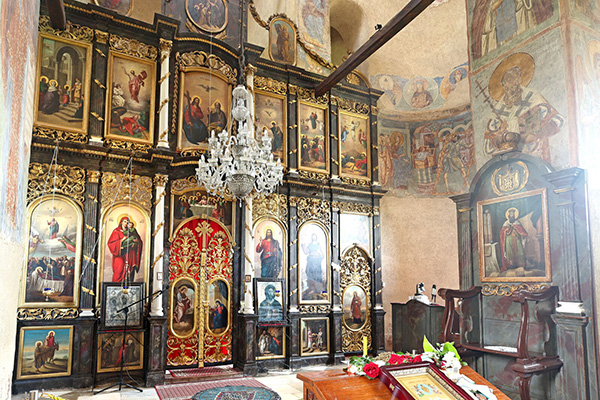Ljubostinja monastery is located in central Serbia, some 3 km away from the town of Trstenik and the confluence of Ljubostinja river into West Morava. The monastery was founded by Princess Milica, the wife of Prince Lazar Hrebeljanović, who lived there as nun Eugenia and, upon her death, was buried in the monastery catholicon dedicated to the feast of Assumption.
The date the church was built and painted for the first time has not been determined. It has mostly been considered that it was built a couple of years before the Battle of Kosovo and that the painting was commenced immediately before this tragic event. Still, there are hypotheses that the church was made following the death of Prince Lazar and the difficult years that ensued, perhaps around 1398, when their son and heir stabilized relations with Sultan Bayezid. Supporting this view is also the fact that the body of Prince Lazar during its transfer to his foundation, the Monastery of Ravanica, which took place some two years after his death on the Kosovo field and which was described in detail, did not spend the night in the Monastery of Ljubostinja, as it had in the Monastery of Nova Pavlica, a foundation of his nephews, the Musić brothers.
The church of Assumption was built as complex triconhos, with a dome resting on four pillars and a tripartite sanctuary on the east side. The narthex, which was initially open, is vaulted by a domical vault resting directly on the walls. From the inscription on the portal's threshold leading from the narthex into the nave, we learn that master Rade Borović built the church. The church was built from carved stone, while the facades were plastered and painted to imitate the alternation of stone and brick.
Rich architectural sculpture characteristic of the Morava school of architecture adorns the church's exterior as a cornice, monoforas, biforas, and stone rosettes carved with geometric and vegetative ornaments.
The first layer of painting is preserved in pendentives, where the images of two evangelists with personifications of Wisdom can be recognized, and in the lower part of the drum of the dome above the nave, where prophets holding scrolls were painted. Possibly, jambs of the north choir door and the lunettes of the remaining three portals of the narthex were decorated at that time. Aniconic images were painted in the narthex, including Golgotha crosses flanked by vine scrolls. Considering that some inscriptions that accompany figures preserved from that phase were written in Greek, it is highly likely that the painter came from Byzantium.
Since he only commenced and soon had to cease the painting, another painting was initiated, which, based on the founders' portraits, can be dated after 1402 when Stefan Lazarević was given the title of despot, as he is designated as such. Since his younger brother Vuk is painted next to him, the painting must have been completed before his death in 1410, certainly before 1409, when the fallout between the brothers became definitive. Ecumenical councils were also painted in the narthex. In the nave, scenes from the cycle of Great Feasts, Christ’s Miracles, and Passion can be seen, as well as standing figures and busts of saints in medallions, while the painting in the sanctuary is almost destroyed. Above the portal lunette leading from the narthex into the nave is a preserved signature of painter Makarios, who was in charge of the group of painters responsible for these frescoes.


